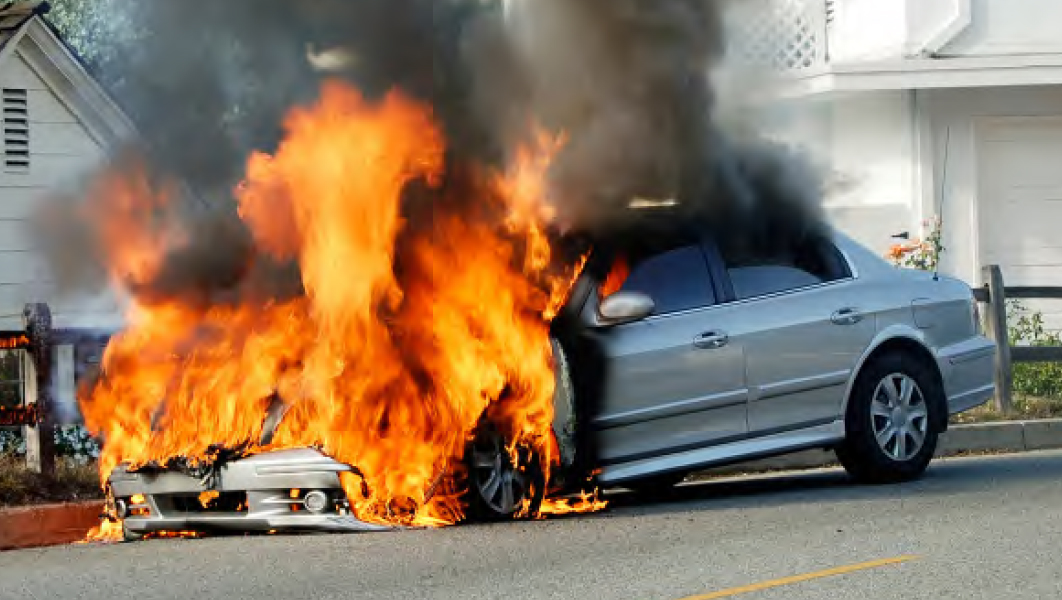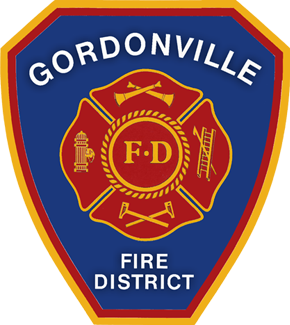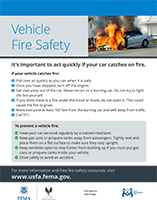Automobile Fire Safety

Fire deaths resulting from motor vehicle accidents are estimated at 650 to 750 annually. Motor vehicles are constructed with a variety of synthetic and often flammable materials, that burn very hot and produce harmful gases. Gasoline and other flammable fluids are also present. Some parts of a vehicle can burst or explode when heated by a fire, sending debris a great distance. These are precisely why firefighters wear full protective gear and breathing apparatus when confronting a vehicle fire. Without this type of protection the average citizen is very vulnerable to serious injuries or worse.
FIRE FACTS
- Catalytic converters operate at about 1,600 degrees Fahrenheit under normal conditions, but have been tested at up to 4,000 degrees in a poorly tuned car.
- Currently, the Number 1 rescue operation for firefighters is trapped crash victims in vehicles.
- In 1992, there were 405,000 vehicle fires in the United States.
- The majority of vehicle fire deaths occurred in "survivable" crashes. Use seat belts regularly.
- Nearly 25% of all reported fires were in motor vehicles, resulting in 17% of all fire-related deaths.
- One gallon of gasoline has the explosive potential of thirty sticks of dynamite.
- Only 2% of vehicle fires are caused by collisions but represent 64% of vehicle-fire deaths.
GENERAL PRECAUTIONS
- A catalytic converter is part of your car's exhaust system, after the engine, and before the muffler. Be aware of this high temperature heat source and take care not to park where "burnables" may come in contact with it.
- Maintain your car according to manufacturer's specification. If you notice unusually high fuel consumption, changes in your cars performance, or sense strange odors coming from the vehicle, have it checked out by a professional.
- Place a multipurpose fire extinguisher in your car and make sure it is easily seen and accessible.
- Regularly check the hoses, gaskets, and fittings on your engine for any leaks or cracks.
- Use your ash tray, rather than an open window. Cigarettes do not self-extinguish and are the cause of most open area fires.
WHAT YOU CAN DO IF YOUR CAR IS ON FIRE
- If the hood or dash begins smoking, pull over and turn off the engine.
- If there are visible flames in the engine compartment, do not raise the hood, it could flash over and cause you serious injury.
- If you have a fire extinguisher, stick the nozzle through the front grill and spray the engine area thoroughly, then wait for the fire department at a safe distance from your car.
- Move quickly away from a burning automobile and remain at a safe distance, and then call 911.
VEHICLE SAFETY
With today's new vehicle designs that include Supplemental Restraint Systems (SRS), reinforced safety glass and other improved features, there are a few things you need to know:
- Always make sure that you drive with your seat belt fastened. Seats belt keep passengers from being thrown from the vehicle during a collision.
- Keep small children, especially car seats, out of the front seats. Always place small children and car seats in the rear of the vehicle.
- Make sure that you do not sit too close to a steering wheel or dashboard that has air bags.
- Remain in your vehicle after an accident unless there is imminent danger. Wait for the fire department to arrive and give you further instructions.
Follow Us on Facebook!
Contact Information
Mailing Address:
P.O. BOX 97
Gordonville, MO 63752 US(P) 573.204.9100
(F) 573.204.9102Powered by:
Maximum Impact Development

